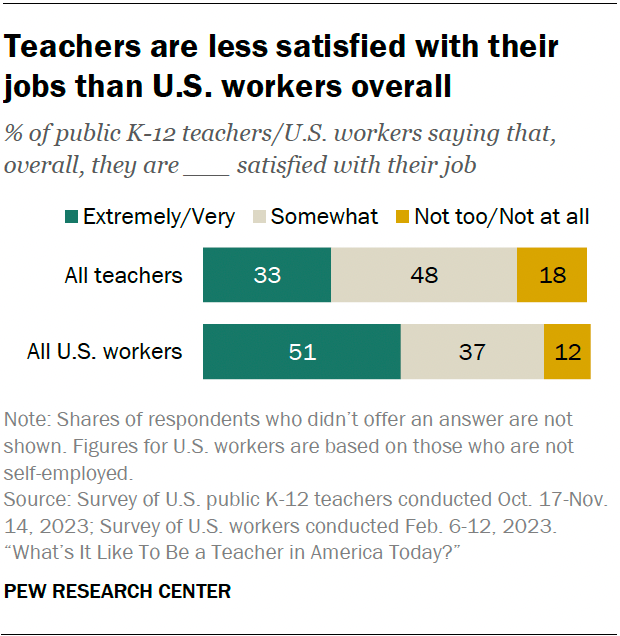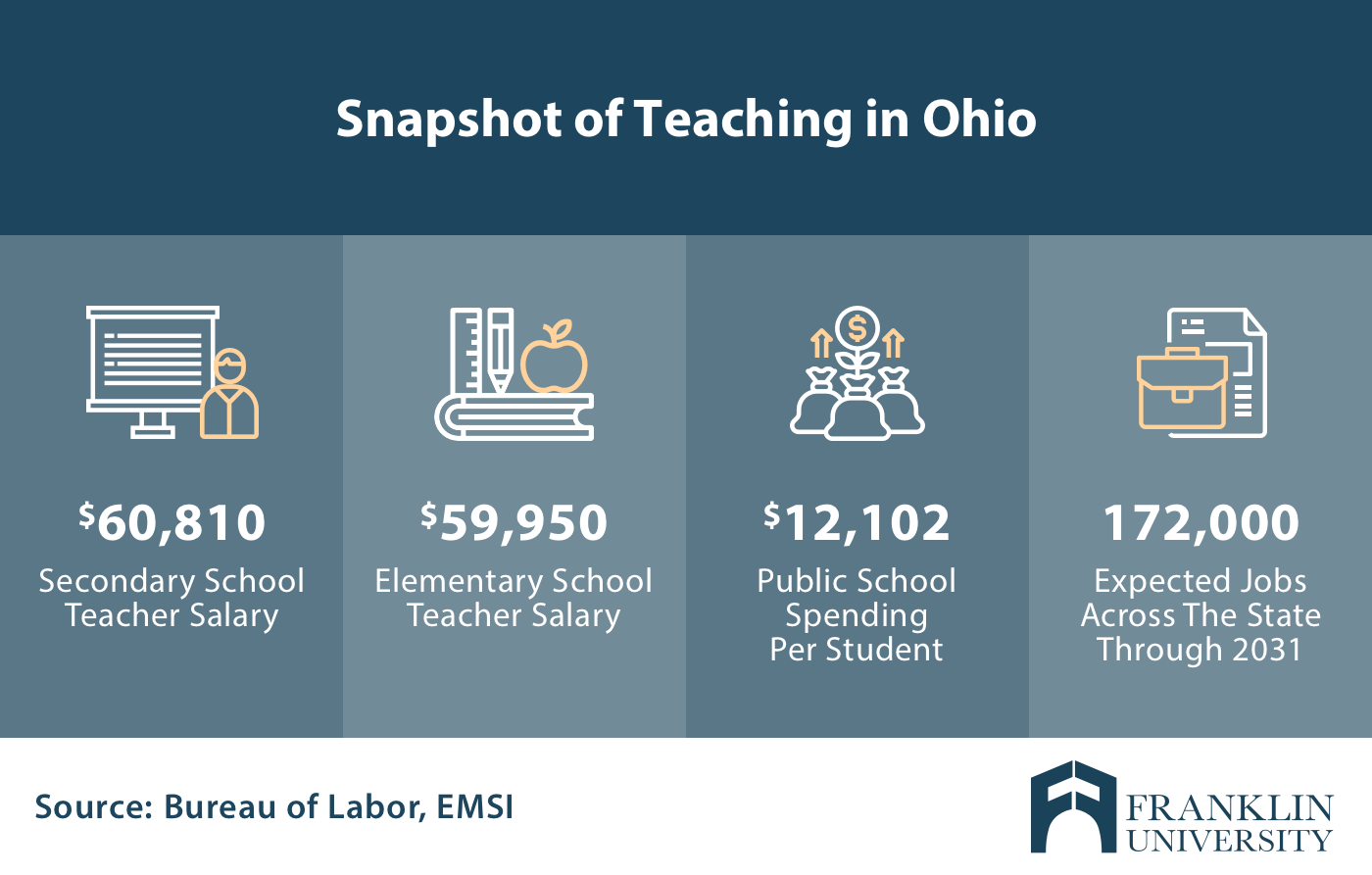As of the latest data, the United States has approximately 3.7 million teacher jobs in the U.S. These positions span across primary, secondary, and postsecondary levels.
Exploring a career in education offers a chance to make a profound impact on young minds and contribute to societal growth. Teachers in the U. S. Are central figures in shaping the skills and knowledge of future generations. They work within a range of environments, from public and private schools to charter schools and educational programs outside of the traditional school system.
With education being a cornerstone for development and progress, these professionals are highly regarded for their role in guiding and nurturing students’ academic and personal development. The demand for qualified teachers varies by region and subject, with certain areas experiencing a higher need for educators. This dynamic field offers diverse opportunities for those passionate about teaching and learning.
Introduction To. Teacher Jobs in the U.S
The United States is home to a dynamic and diverse education system. This system relies on a vast network of professionals dedicated to shaping the minds of the young and eager. Within this network, teachers form the backbone, guiding students through their academic journey. Understanding the employment landscape within this sector is not just about the numbers but the stories they tell about education priorities, challenges, and opportunities in America.
Significance Of Teachers In American Society
The role of teachers extends far beyond the classroom walls. As mentors, role models, and leaders, teachers have a profound impact on society. They equip students with the skills needed for future success. Their influence shapes social values, encourages critical thinking, and fosters a love for lifelong learning. Recognizing their importance is crucial to appreciating the teaching profession’s vast reach within the U.S. [Teacher Jobs in the U.S.]
Scope Of The Teaching Profession Nationally
The scope of teaching jobs varies across regions, subjects, and grade levels. Data shows a rich tapestry of professionals committed to education across the country. With an ever-growing student population, the need for skilled teachers is rising. This growth translates to an increase in teacher jobs, from bustling urban districts to quiet rural schools. The role they play in shaping America’s future cannot be overstated.

Credit: www.pewresearch.org
Historical Trends In Teaching Jobs
Exploring the historical trends in teaching jobs reveals a dynamic journey shaped by various social, economic, and political forces. [Teacher Jobs in the U.S.]
Decades Of Growth And Decline
The education sector has witnessed periods of both expansion and contraction. The mid-20th century saw a boom in teaching jobs, fueled by the post-war baby boom. Classrooms needed more teachers to educate the soaring number of students. This growth went on for decades.
Yet, the late 20th century introduced challenges, with budget cuts and policy shifts leading to job reductions in some regions. Demand for teachers fluctuated, but overall, the number of teaching positions continued to trend upward.
| Decade | Change in Teacher Jobs |
|---|---|
| 1950s-1960s | Significant Growth |
| 1970s-1980s | Moderate Growth |
| 1990s-2000s | Varied Impact (Growth & Decline) |
Impact Of Legislation And Policy
Government actions have had profound impacts on the teaching profession. Key legislation like the No Child Left Behind Act of 2001 increased demand for qualified teachers but also introduced more stringent evaluation standards. [Teacher Jobs in the U.S.]
- 1960s: The Elementary and Secondary Education Act provided federal funds, increasing teacher employment.
- 1980s: A Nation at Risk report led to education reforms and a focus on teacher quality rather than quantity.
- 2000s: Legislation emphasized accountability, affecting hiring practices and job stability for teachers.
New policies continue to shape the landscape, with the latest discussions centered around digital literacy and STEM education driving the need for specialized teaching skills.
Current Statistics On Teacher Employment
Exploring the current statistics on teacher employment unveils vital information for aspiring educators and policymakers alike. Understanding the educational landscape is crucial, especially in terms of job availability and distribution. Let’s dive into the latest data.
Numbers Across States And Regions
The distribution of teacher jobs varies widely across the United States. Certain regions show higher employment rates. Regional demands often reflect student populations.
| Region | Number of Teachers |
|---|---|
| Northeast | 300,000 |
| Midwest | 400,000 |
| South | 500,000 |
| West | 350,000 |
The numbers highlight intriguing patterns across various U.S. states.
Comparing Public vs. Private Sector [Teacher Jobs in the U.S.]
Comparing Public Vs. Private Sector
Public schools employ the majority of U.S. teachers. Private schools play a critical yet smaller role in employment. Recent stats show distinct trends in both sectors.
- Public schools: Approximately 3.2 million teachers
- Private schools: Roughly 400,000 teachers
Public sector positions often come with benefits like pensions and strong job security. Private sector jobs might offer more flexibility and smaller class sizes.

Credit: www.franklin.edu
Factors Influencing Teacher Job Availability
Understanding the number of teacher jobs available in the United States requires looking at different factors. These elements affect whether schools are hiring or why they may need fewer educators. Let’s explore some key factors that influence teacher job availability in the U.S.
Budgets And Educational Funding
The money that schools can spend on hiring comes from budgets. These budgets tie directly to state and local funding for education.
Educational funding impacts: [Teacher Jobs in the U.S.]
- Teacher salaries: More money means higher salaries and often, more jobs.
- Classroom resources: With adequate funding, schools can afford more teachers.
- Training programs: These require funds that can also affect hiring.
When budgets shrink, schools might hire fewer teachers, or not replace those who leave.
Enrollment Rates And Demographic Changes
School enrollment numbers play a big role as well. If fewer students attend, there’s less need for teachers. [Teacher Jobs in the U.S.]
Demographic changes can cause:
- Population shifts: People moving can lead to some schools closing.
- Age trends: Changes in birth rates affect how many kids enter school.
- Cultural factors: They shape education values and hence, demand for teachers.
Areas with growing populations may see more teaching jobs. Those with fewer young people might have less.
Subject And Grade Level Breakdown
The landscape of education in the United States is as diverse as the students it serves. Understanding how teaching jobs are split across different subjects and grade levels can help pinpoint where the demands are highest. Let’s delve into the statistics and see which specific areas are looking for passionate educators. [Teacher Jobs in the U.S.]
High-demand Teaching Areas
Some subjects consistently show a higher need for teachers nationwide.
- Science: Middle and high school levels have a particular demand for qualified science teachers.
- Mathematics: Math teachers, especially at the secondary education level, are sought after in many districts.
- Bilingual Education: With increasing numbers of non-English speakers, bilingual educators are in short supply.
- Technology: As digital literacy becomes essential, schools seek teachers skilled in technology.
Special Education And Language Specialists
Two specialized fields in education tend to have a consistent stream of openings:
| Specialization | Explanation |
|---|---|
| Special Education | These teachers work with students who have various learning disabilities and require individualized instruction. |
| ESL/TESOL | Tutors instructing in English as a Second Language or Teaching English to Speakers of Other Languages are highly valued. |
Both roles often offer additional incentives due to their high demand and the specialized skill sets required. [Teacher Jobs in the U.S.]
Teacher Salaries And Benefits
Understanding teacher salaries and benefits is essential when exploring the education sector. Teachers’ financial and professional welfare is a key factor in job satisfaction. These elements also impact the ability to attract and retain quality educators. Let’s delve into the details of how much teachers earn across the United States and the perks that come with this vital profession.
Regional Salary Variations
Different parts of the country offer varied compensation packages for teachers. Factors such as living costs, state funding, and demand for teachers can lead to significant salary differences.
| Region | Average Salary |
|---|---|
| Northeast | $60,000 – $75,000 |
| Midwest | $50,000 – $65,000 |
| South | $45,000 – $60,000 |
| West | $55,000 – $70,000 |
Location plays a large role in determining a teacher’s salary.
Job Stability And Tenure
Teachers often enjoy greater job stability compared to other professions. This is due to the constant need for educators. Many school districts offer tenure. Tenure is a form of job security that makes it difficult to fire a teacher without cause after a certain period.
- Probationary Period: Typically 2-3 years before eligibility for tenure
- Job Security: Tenured teachers are shielded against arbitrary dismissal
- Professional Growth: Opportunities for advancement are available in the educational field
As such, teachers can look forward to a promising career trajectory, with benefits that support both personal and professional growth. [Teacher Jobs in the U.S.]
Challenges Facing Today’s Educators
Educators across the United States face a set of unique challenges. In the current landscape of education, teacher positions are critical for nurturing young minds. Yet, many schools struggle with maintaining a robust and experienced teaching staff. Let’s delve into the key hurdles educators face today. [Teacher Jobs in the U.S.]
Retirement And Retention Rates
Teachers are retiring at a rapid pace. Schools must react to avoid a crisis. The retention of qualified teachers is also a struggle. Many factors contribute to these rates:
- Job satisfaction is lower than in past years.
- Educational policies often shift, causing uncertainty.
- Compensation and benefits may not meet expectations.
- Work-life balance is hard to achieve with increasing demands.
These elements push teachers out of the profession. They also discourage incoming talent.
The Impact Of Teacher Shortages
A lack of teachers has a domino effect on education. Shortages lead to larger class sizes and reduced one-on-one attention for students. Other impacts include:
- Decreased student performance due to overworked educators.
- Lower morale among teachers, affecting school culture.
- Substitute teachers may need to cover long-term positions.
- Courses and special programs might be cut back or eliminated.
These issues affect student success and growth. They underline the crucial need for consistent, quality educators. [Teacher Jobs in the U.S.]
Future Of Teaching Jobs In America
The landscape of education in the United States is ever-evolving. Teaching jobs, a cornerstone of the educational system, face numerous changes. As we step into the future, several factors will determine the demand, availability, and nature of these essential roles. Let’s explore what lies ahead for the American educator.
Projected Employment Trends
The Bureau of Labor Statistics provides insights into the expected trends for teaching jobs. Between 2020 and 2030, education, training, and library occupations are projected to grow by 10%. This increase hints at steady opportunities for aspiring and current educators. Primary reasons for this growth include: [Teacher Jobs in the U.S.]
- Rising student enrolment rates
- Decreasing student-teacher ratios
- Influx of retirements requiring replacements
Regions may vary in their demand for teachers. Urban and rural areas often seek more educators than suburban districts. Specialized subjects like science, technology, engineering, and mathematics (STEM) also portray a strong demand for teachers.
Innovations In Education And Their Effect On Employment
Education technology has reshaped the teaching landscape. Digital tools and online platforms have created new positions while changing existing ones. Innovations influence teacher employment in significant ways: [Teacher Jobs in the U.S.]
| Innovation | Effect on Employment |
|---|---|
| Virtual Learning Platforms | Demand for tech-savvy educators rises |
| AI & Personalized Learning | New roles in curriculum development emerge |
| Real-time Student Data | Careers in educational data analysis grow |
Teachers adept in technology can find new opportunities as schools adopt hybrid models. Educators with skills in both traditional and online instruction will be invaluable. This dual expertise ensures adaptability in an increasingly digital learning environment. [Teacher Jobs in the U.S.]
Furthermore, ongoing professional development is crucial. Teachers must keep up with instructional innovations to stay relevant in their field. Career-long learning stands as a non-negotiable in the modern education context. It ensures teachers meet diverse student needs effectively.
Role Of Alternative Education In Teacher Employment
The landscape of teacher employment in the United States is evolving rapidly, with alternative education models playing a crucial role. These models offer diverse opportunities for educators outside traditional public school settings. Unconventional learning environments require a unique blend of skills, making the demand for innovative teachers more significant than ever. This evolution is shaping the face of educational employment in multiple facets. [Teacher Jobs in the U.S.]
Charter Schools And Virtual Learning
Charter schools and virtual learning platforms are expanding educational frontiers. These options serve students with various learning needs and preferences. [Teacher Jobs in the U.S.]
- Charter Schools: These schools provide an alternative to district public schools and often feature unique curriculums. This opens up numerous positions for teachers.
- Virtual Learning: Online education demands tech-savvy educators. Teachers can work from different locations, using innovative tools to enrich student learning.
These burgeoning educational sectors contribute significantly to the overall number of teaching jobs. They are elevating the employment landscape for educators across the nation.
Impact Of Homeschooling And Unconventional Methods
Homeschooling and innovative teaching methods have led to an uptick in demand for specialized instructors and consultants. Educators are often sought after to design custom curriculums and offer guidance. [Teacher Jobs in the U.S.]
| Education Model | Role in Teacher Employment |
|---|---|
| Homeschooling | Parents seek teachers for curriculum development and instruction customization. |
| Unconventional Methods | Alternative programs seek creative educators to implement innovative teaching strategies. |
Alternative approaches broaden employment prospects for teachers. They pave the way for roles that challenge traditional pedagogy and reward adaptive, forward-thinking educators.

Credit: m.facebook.com [Teacher Jobs in the U.S.]
Conclusion: Educator’s Outlook
Conclusion: Educator’s Outlook shines a light on the vital role teachers play in shaping the future. Education careers offer fulfillment, challenge, and growth. Understanding the dynamics of teacher employment helps educators and policymakers alike ensure a robust educational system.
Preparing For The Future In Education
The landscape of education constantly evolves. Technological advancements, policy shifts, and changing educational needs demand that educators stay ahead. Continuous professional development is key. Teachers must embrace new tools and methods to remain effective.
- Educational technology proficiency is a must.
- Creative teaching strategies engage diverse learners.
- Adaptability ensures relevance in various teaching environments.
Supporting Sustainable Growth In Teaching Jobs
To maintain a steady supply of qualified teachers, strategies focused on sustainability are essential. Investing in teacher education generates a ripple effect, leading to better student outcomes and stronger communities. [Teacher Jobs in the U.S.]
- An increase in educator support programs aids retention.
- Competitive compensation plans attract top talent.
- Community partnerships open avenues for real-world learning.
Frequently Asked Questions
Is There A Teacher Shortage In The USA?
Yes, the USA is currently experiencing a teacher shortage, particularly in areas like special education, science, and math. This shortage impacts schools nationwide, with urban and rural districts facing the greatest challenges. [Teacher Jobs in the U.S.]
Is Teaching Job In Demand In Us?
Yes, teaching jobs are in high demand in the USA, especially in subjects like science, mathematics, and special education.
How Many Teachers Are In The United States?
As of 2021, there are approximately 3. 2 million full-time public school teachers and 0. 4 million private school teachers in the United States.
What Percentage Of The US Workforce Are Teachers?
Approximately 2% of the U. S. workforce consists of teachers, playing a crucial role in shaping the nation’s education.
Conclusion
Navigating the landscape of teacher employment reveals a dynamic field with numerous opportunities. Understanding the prevalence of teaching positions helps prospective educators align their career paths. The sheer volume of jobs reflects education’s evergreen nature in the U. S. Remember, shaping the future through teaching remains a noble and sought-after profession.

I’m based in the USA, Canada, Australia, and the UK—four vibrant countries with rich educational landscapes and diverse news ecosystems.
Feel free to adjust and personalize this introduction to reflect your unique voice and experiences. Happy writing! 📝✨

